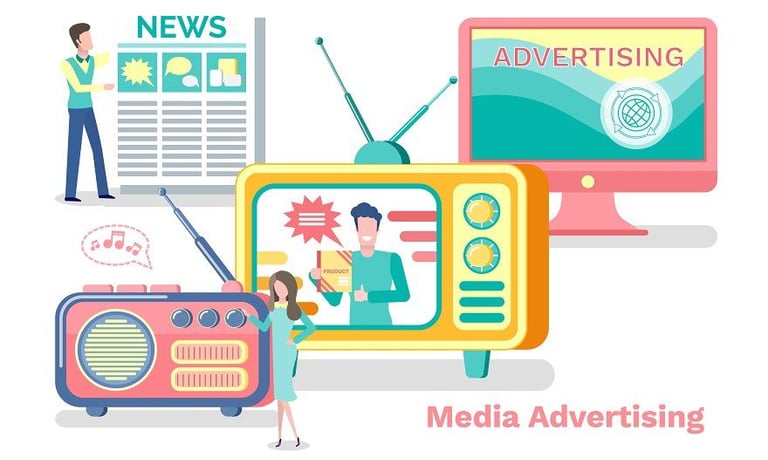Unveiling the ROI Debate: Does Digital Advertising Pay Back More Than TV?
In the ever-evolving landscape of advertising, the debate between digital advertising and traditional TV advertising continues to spark discussions. A thought-provoking article on Brand Equity explores the question: Does digital advertising pay back more than TV? In this blog post, we delve into the key insights and shed light on this intriguing topic that is shaping the advertising industry.
2 min read


Measuring Return on Investment (ROI): One of the primary challenges in comparing the effectiveness of TV and digital advertising lies in measuring the return on investment. While TV advertising has long been synonymous with mass reach and brand-building, digital advertising offers unique targeting capabilities and precise measurement tools. Evaluating ROI for each channel requires a comprehensive understanding of their respective strengths and limitations.
The Power of TV Advertising: TV advertising remains a formidable medium, particularly for brand-building and creating broad awareness. With its extensive reach and captive audience, TV has long been a trusted platform to engage consumers on a large scale. The power of TV lies in its ability to tell compelling stories, evoke emotions, and forge long-lasting connections with viewers, leaving a lasting impact on brand perception.
The Advantages of Digital Advertising: Digital advertising presents a plethora of advantages, including unparalleled targeting and personalization options. With precise audience segmentation based on demographics, interests, and behaviors, digital ads can deliver highly relevant content to the right individuals at the right time. The advent of programmatic advertising and data analytics further enhances the effectiveness of digital campaigns, enabling marketers to optimize their ad spend and drive better ROI.
Enhanced Measurement and Attribution: One of the significant advantages of digital advertising is its robust measurement and attribution capabilities. Digital platforms offer in-depth analytics and tracking tools that enable advertisers to measure various key performance indicators (KPIs) and attribute conversions to specific campaigns. This data-driven approach empowers marketers to refine their targeting strategies, optimize ad spend, and achieve measurable outcomes.
Finding the Right Balance: The effectiveness of advertising hinges on factors such as campaign objectives, target audience, and available budget. While TV advertising can be instrumental in building brand awareness and reaching a broad audience, digital advertising offers precise targeting, personalization, and measurable outcomes. Striking the right balance between these channels based on campaign goals and leveraging their respective strengths can yield optimal results.
The Future of Advertising: As technology continues to advance, the lines between TV and digital advertising are becoming increasingly blurred. Connected TVs and streaming platforms are bridging the gap between traditional TV and digital experiences. The rise of mobile devices and the popularity of social media platforms have further transformed the advertising landscape. The future lies in integrated strategies that leverage the strengths of both TV and digital to create impactful and measurable campaigns.
The debate surrounding whether digital advertising pays back more than TV is complex and multifaceted. Ultimately, the effectiveness of advertising lies in understanding the target audience, setting clear objectives, and adopting a data-driven approach to measure and optimize campaigns. The evolving advertising landscape presents new opportunities for brands to engage with their audiences effectively and achieve their marketing objectives.
